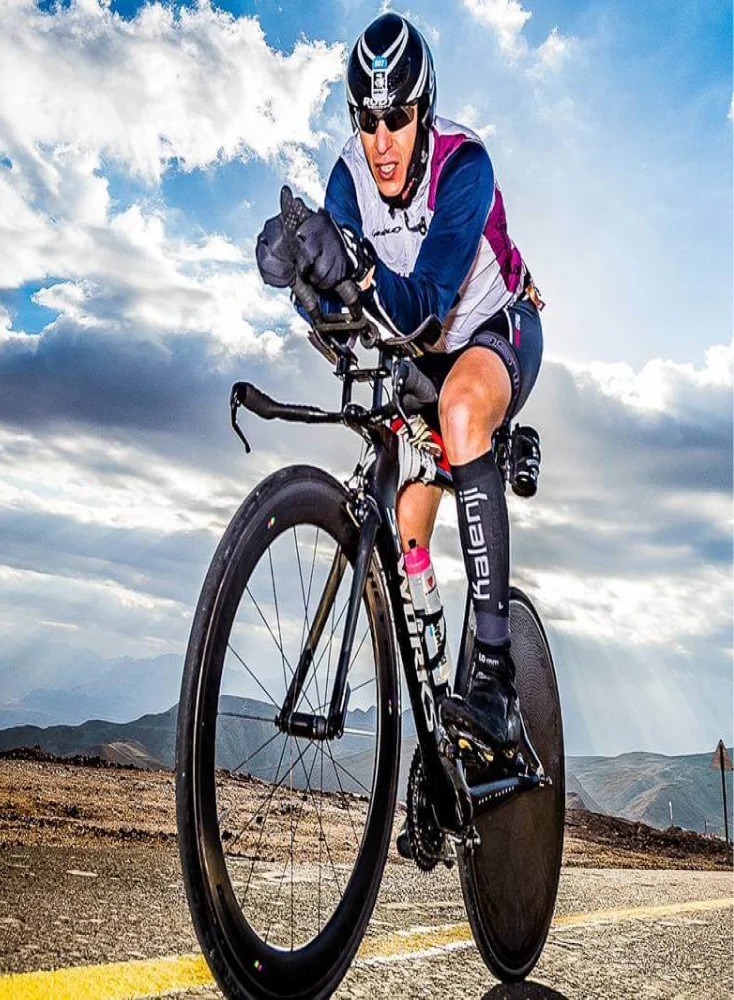
Cycling
How to Improve Endurance for Cyclists
Endurance and stamina are key attributes for all cyclists, but how do you improve them?
4 mins read
Published on
April 25, 2019
Written by
EDGE
Share this article
We spoke to national champion and performance coach Matt Bottrill to get his expert advice on building both, enabling you to elevate your cycling fitness and performance. Matt is the founder of Matt Bottrill Performance coaching, which specialises in time trial, duathlon, triathlon and road-racing, giving him plenty of expertise to draw on.
BUILD A STRONG BASE
Whatever your ability, or level, every cyclist should incorporate some basic themes into their weekly training plan in order to improve endurance. “I advise my cyclists to carry out at least one basic endurance ride per week,” says Bottrill. “This will be a lower intensity ride of roughly three hours. If training on power or heart rate it will be between zones one and three, and you should be able to hold a conversation with a training partner.”
If you’re short on time, Bottrill suggests you up the intensity, spending more of your time in heart rate or power zones two to three. “If you haven’t got a heart-rate monitor, or power meter, it’s worth investing in one,” he says. “Measuring your effort means you train the correct physiological systems and so training becomes more effective.”
Club rides can be good for endurance training as they tend to be longer and at a steadier pace. Make sure you’re training in the right group, though. “If the group pace is too hard or too easy then you need to find a different one; measuring your effort with heart rate or power will tell you if your club ride is right for you,” says Bottrill.
TIME POOR? TRAIN SMART!
If you are short on time – as most of us are – you’ll have to train smart to get the maximum benefit from the time you do have.
One way to do this is to train at an intensity that is harder than your race-day effort. This will allow you to put in fewer hours, then on race day you can back off, feel like you’re cruising, but still be going fast.
“Obviously, there are limits to this method,” says Bottrill, “so make sure you chose an event that you can realistically train for. You could get away with training for an Ironman bike split with your longest session being between three and four hours, if you build up to spending big chunks of time at level three. But you won’t get away with it if your longest session is only an hour!”
TRAIN IN ZONE THREE
A great way of improving endurance in a relatively short training session is to build time spent in your zone three. Doing this is a good starting point for training for half and full Ironman. A three-hour ride with level three sections is a good basis of any endurance based training plan.
“Start by doing three-four 10-minute blocks of level three with 10 minutes in between each, and over the weeks build the time spent in that zone,” says Bottrill. “You could go as far as doing two times one hour at level three.”
HIGH INTENSITY INCREASES POWER
It’s important to remember that to build endurance, high intensity workouts will still be an important factor in your training week. These types of workouts help to increase power and get you used to changes in pace, e.g. chasing down a rival, working harder up the hills, accelerating out of corners.
“A good way of splitting your training is to focus on higher intensity efforts in the week, when most people have less time and then doing longer endurance sessions at the weekend,” suggests Bottrill.
Make sure you build up gradually to the higher intensity efforts. Working to heart rate or power zones is important as it ensures you train the right areas and is less subjective. Training to power is the most effective tool, as heart rate is susceptible to many influences, whereas power is more consistent and enables you to track progress.
PLAN FOR PROGRESSION
If you want to achieve success it’s essential you plan your weekly sessions, and that they show a gradual progression in time and/or intensity.
“Don’t repeat the same training week after week or you will stagnate,” advises Bottrill. “Failing to plan your sessions will lead to disappointment on race day. Also, it’s important you don’t rush into higher intensity sessions; lay strong foundations first for at least 12 weeks. Look at the demands of the goal and try to train to meet them.”
INCLUDE THIS ENDURANCE SESSION IN YOUR TRAINING
With all this information you’ll soon find that your endurance levels grow. Bottrill, himself a national champion, has one session that he advises the athletes he coaches to build in to their training plan.
“One of my favourite endurance sessions is two times one hour of effort at level three as part of a three-hour ride,” he shares. “Level three gets you working but it is sustainable, and you’ll find that you eat the miles up as it can still be quite fast.
“You can really get into a good groove in this session and you’ll feel great once it’s done; you’ll be able to feel it in your legs, but you can recover quite well from it as well!”
Blood test for
Cyclists
Male & Female Tests
sports doctor review
Results in 2 working days
Flexible subscription

